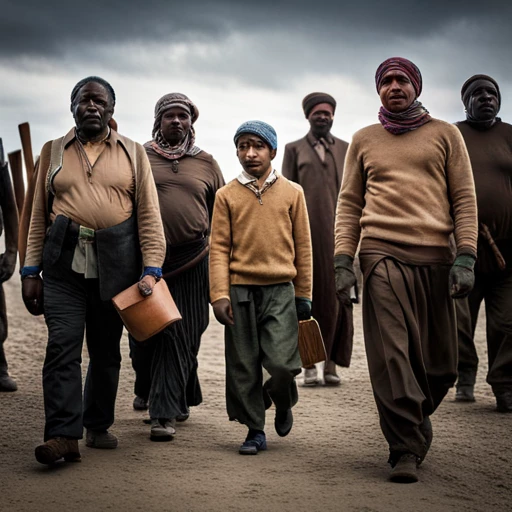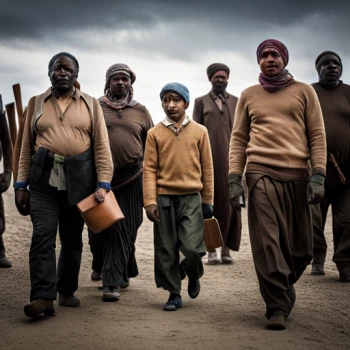"Bedoon" in the Gulf
"Bedoon" is a term used by Gulf residents to describe a group of people who migrated from the desert to the city and lack official documentation.
Bedoon in the Gulf region includes minorities, migrants affected by border conflicts, separatist regions, Palestinians, and the Palestinian diaspora. It also encompasses street children and the homeless.
Certain categories worldwide face solvable issues, but obstacles prevent these problems from being resolved due to the interests of influential individuals and beneficiaries.
Bedoon in the Gulf refers to a large group of families, numbering in the thousands, comprising nomads who lack citizenship in their host country or any other nationality.
Reasons for their suffering include their migratory patterns. During summer, Gulf nomads migrate northwards towards Iraq, Syria, Turkey, and Jordan, while in winter, they return to the Arabian Peninsula due to rain, grass, and suitable climate. During the Ottoman Caliphate and after its fall, power shifted to French and English mandates in northern Arabia. The nomadic lifestyle persisted after the mandates' withdrawal and the delineation of borders between nations. The Gulf War, drug proliferation, and the emergence of terrorist groups exacerbated the nomads' plight, involving issues of nationality and citizenship rights. Additionally, their suffering is heightened by living in wealthy countries that offer global aid, reducing internal assistance.
Minorities, migrants affected by border conflicts, separatist regions, Palestinians, and the Palestinian diaspora face problems due to government policies, majority citizens, laws, regulations, and media incitement. Issues include denial of naturalization, property ownership, and profession engagement.
Street children and the homeless were previously thought of as individuals without shelter or housing. However, the United Nations' classification was more detailed, revealing that this issue affects the entire world to varying degrees.
Street children are classified as follows:
1. Children who find shelter on the streets without a designated residence.
2. Children working on the streets while residing with their families/guardians in specific locations.
3. Street work includes street-based economic activities, services, begging, and other activities that attract children to the streets.
Homelessness is divided into complete and partial:
1. Complete homelessness refers to those with no shelter living on the streets.
2. Partial homelessness includes those who move between shelters, family, and friends.
3. Another category includes those residing in unsafe shared spaces.
Problems faced by these groups include lack of safety, limited access to education (including certain scientific disciplines), healthcare, mobility, and basic amenities. They are exposed to verbal and physical violence, reputation smearing, and exploitation. They might resort to crime for survival.
Failure to address these issues may result in lawless areas, disease outbreaks due to inadequate healthcare and infrastructure, increased crime and fraud, trafficking of humans and children, gang formation, and social and psychological issues due to the lack of resolution.
Proposed solutions include forming neutral professional groups to establish appropriate measures. Choosing unbiased and independent personnel, raising awareness, ensuring healthcare coverage, financial aid during disasters, improving labor and loan laws, accepting aid without conditions, seeking assistance from successful nations, granting education, work, travel, ownership, and citizenship rights, and addressing psychological and social issues.
Finally, the author believes that the issue of "Bedoon" in the Gulf will be resolved soon with increased political and security awareness among leaders and an understanding of the risks of delaying reforms for this group.







-tiny.webp)